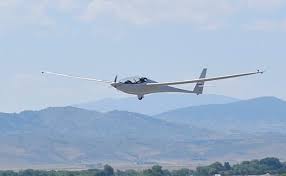
Breaking News
 Why Mamdani's socialist revolution in New York has sparked a civil war for Democrats...
Why Mamdani's socialist revolution in New York has sparked a civil war for Democrats...
 Tech tycoon whose parents fled communism offers six reasons NYC will become hellish dystopia...
Tech tycoon whose parents fled communism offers six reasons NYC will become hellish dystopia...
 NASA detects bizarre boost in interstellar visitor's speed as it moves toward Earth
NASA detects bizarre boost in interstellar visitor's speed as it moves toward Earth
 Britain "Doomed" Under Labour As Wealthy Scramble To "Get The Hell Out Of London
Britain "Doomed" Under Labour As Wealthy Scramble To "Get The Hell Out Of London
Top Tech News
 Japan just injected artificial blood into a human. No blood type needed. No refrigeration.
Japan just injected artificial blood into a human. No blood type needed. No refrigeration.
 The 6 Best LLM Tools To Run Models Locally
The 6 Best LLM Tools To Run Models Locally
 Testing My First Sodium-Ion Solar Battery
Testing My First Sodium-Ion Solar Battery
 A man once paralyzed from the waist down now stands on his own, not with machines or wires,...
A man once paralyzed from the waist down now stands on his own, not with machines or wires,...
 Review: Thumb-sized thermal camera turns your phone into a smart tool
Review: Thumb-sized thermal camera turns your phone into a smart tool
 Army To Bring Nuclear Microreactors To Its Bases By 2028
Army To Bring Nuclear Microreactors To Its Bases By 2028
 Nissan Says It's On Track For Solid-State Batteries That Double EV Range By 2028
Nissan Says It's On Track For Solid-State Batteries That Double EV Range By 2028
 Carbon based computers that run on iron
Carbon based computers that run on iron
 Russia flies strategic cruise missile propelled by a nuclear engine
Russia flies strategic cruise missile propelled by a nuclear engine
 100% Free AC & Heat from SOLAR! Airspool Mini Split AC from Santan Solar | Unboxing & Install
100% Free AC & Heat from SOLAR! Airspool Mini Split AC from Santan Solar | Unboxing & Install
Solar electric demonstrator takes to the air for the first time

The StratoAirNet medium altitude solar electric demonstrator is being developed for long endurance commercial and government security needs and will operate as an "atmospheric satellite" UAV.
The StratoAirNet prototype has a lightweight composite structure and a 15 meter (50 ft) wingspan packed with SolAero high efficiency PV cells. Under ideal daylight conditions at altitude, the array is claimed to deliver some 2,000 watts for sustained flight.
Though piloted during its debut, and subsequent test flights, at Northern Colorado Regional Airport, the aircraft is destined to become an "atmospheric satellite" UAV, taking a supporting role in long endurance missions including communications relay, internet, mapping, search and rescue, firefighting command and control, anti-poaching monitoring, severe weather tracking, agriculture monitoring, mineral source surveying and spill detection.



